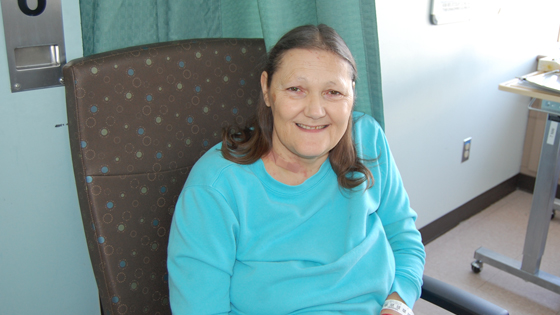
“To feel the joy I’m having right now…it’s hard to imagine,” said Sharon Bathurst, the 1,000th patient to have a kidney transplant at TOH.
Tears of joy spilled down Sharon Bathurst’s cheeks as she prepared to go home after her Jan. 28 kidney transplant – the 1,000th since TOH amalgamated on April 1, 1998.
“It’s a new life,” she said. “I’m going to have more time for my family and four grandchildren.” She’s planning to teach her four-year-old granddaughter how to fish, using the extra time she’ll have from not going to dialysis three days a week.
“It’s rewarding to know that we’ve helped 1,000 patients either get off dialysis or prevent them from ever needing dialysis,” said Dr. Greg Knoll, one of the 10 physicians involved in the highly specialized transplant program. “It gives them freedom to travel and work and to eat a more normal diet – all of which are very difficult while on dialysis.”
About 382 kidney transplants were performed before 1998, starting in the 1960s at the former Civic Hospital. In the last decade, TOH has done about 70 transplants per year, up from 40 to 50 per year before that.
When asked about the current challenges, Dr. Knoll replied: “Donors. Donors. Donors. We do not have enough donors to give a kidney transplant to everyone in need. This is a problem in Ottawa, Ontario, Canada and worldwide.”
Bathurst agrees that donors are vital, and her family will help encourage people to donate organs. “It’s so important to pay it forward,” she said.
Kidney transplant changes over the years:
- Increased numbers of living-donor transplants, especially since 1998. About half are now from a living donor.
- Dr. John Mahoney was the first surgeon in the Ottawa area to remove a living-donor kidney via laparoscopy. It’s now standard practice, and it allows the donor to recover much faster.
- Anti-rejection medications have improved. Acute rejection used to happen in up to half of patients but now happens in less than 10 percent.

Support patient care and research at
The Ottawa Hospital


 To reset, hold the Ctrl key, then press 0.
To reset, hold the Ctrl key, then press 0.
Comment on this post